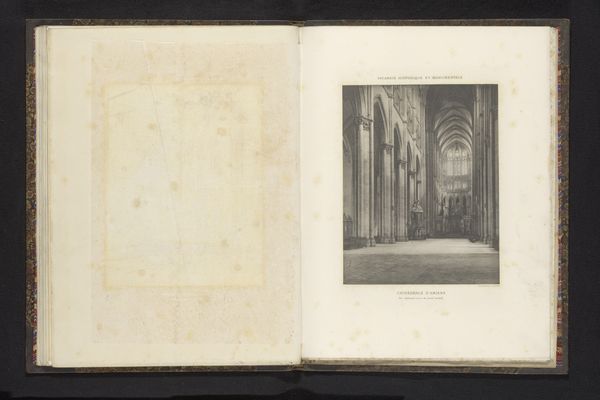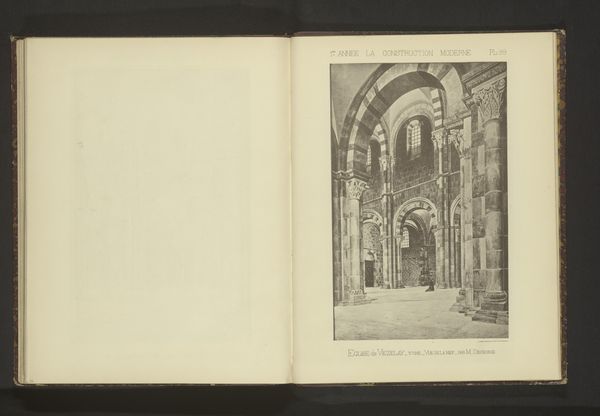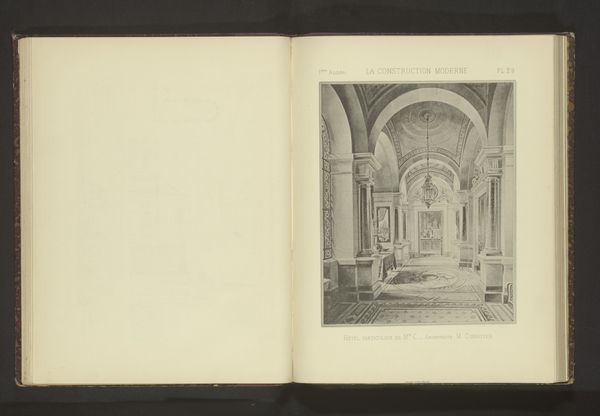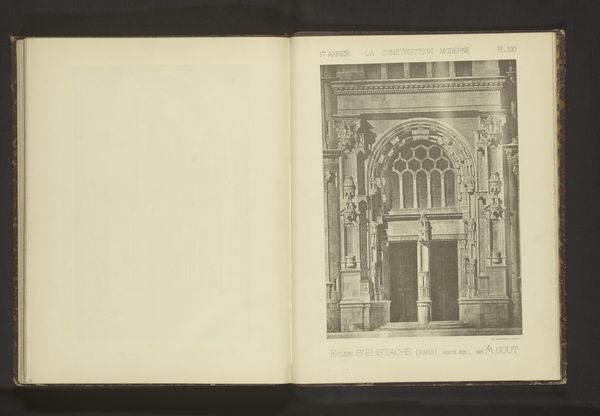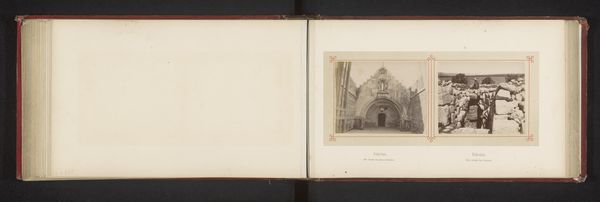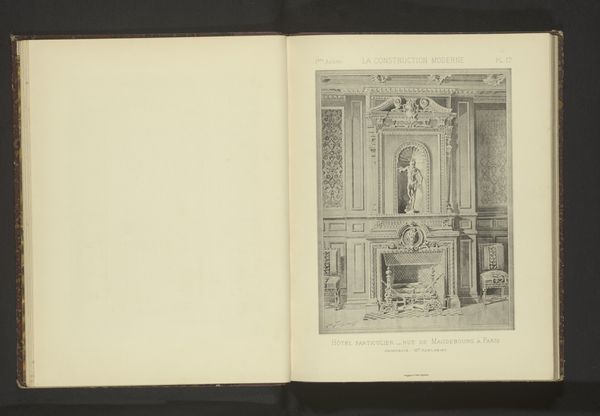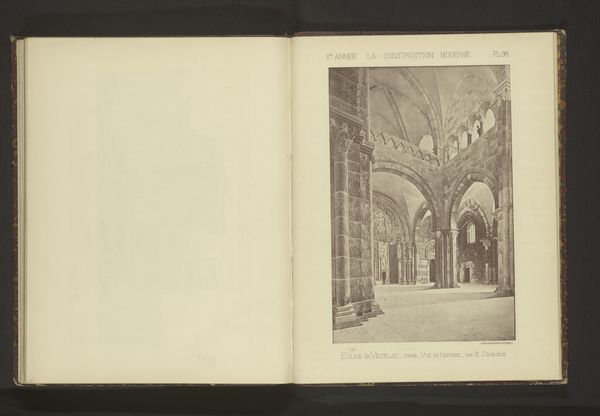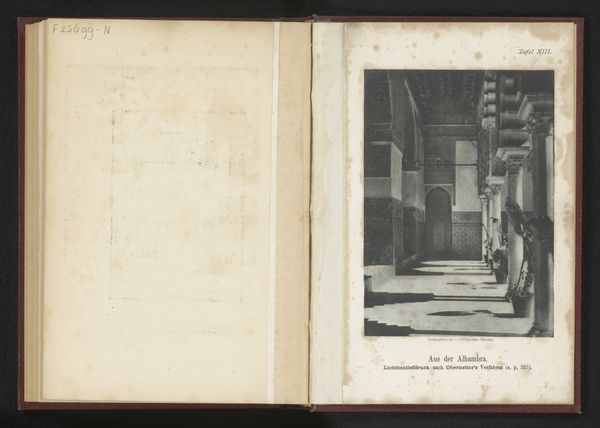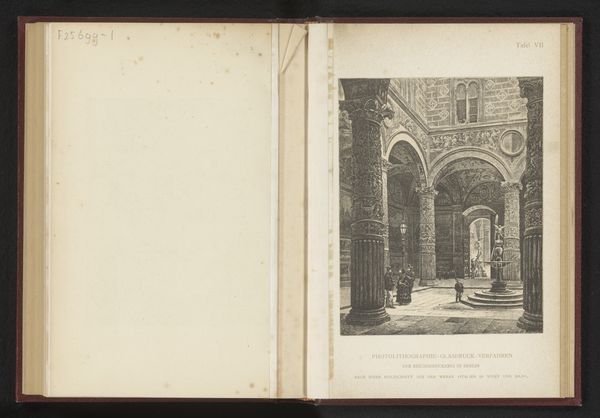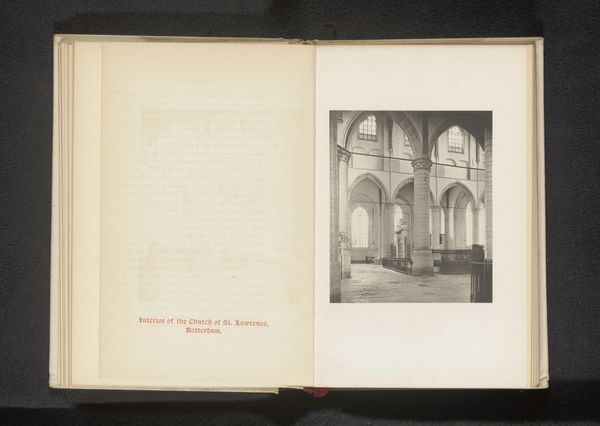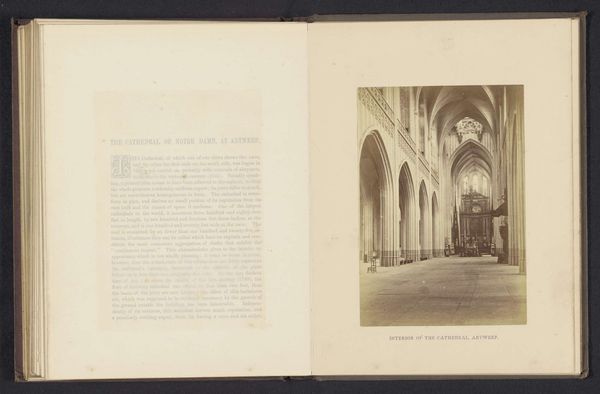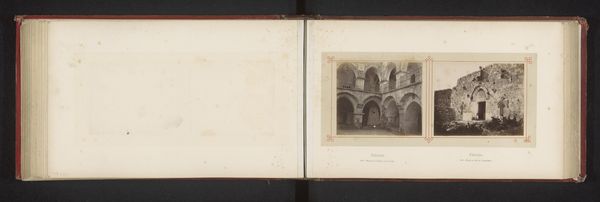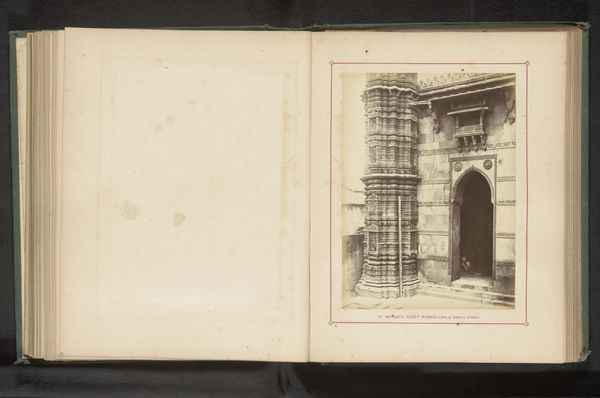
Reproductie van een aquarel van de binnenplaats van een huis in Brugge door M. Hügelin before 1886
0:00
0:00
print, photography
# print
#
landscape
#
photography
#
cityscape
Dimensions: height 249 mm, width 197 mm
Copyright: Rijks Museum: Open Domain
Curator: Here, we have a reproduction of an early watercolor depicting a courtyard view within a home in Bruges. It is attributed to M. Hügelin and dates to before 1886. What stands out to you most upon first viewing? Editor: There’s an undeniable melancholic atmosphere about it, even despite the suggestion of sunlight in the courtyard. The gothic architecture feels almost imposing, like a barrier to entry, and is further muted by a grainy photograph. It reminds me a little of old ghost photographs. Curator: I understand your point; I find a different significance in the symbolism of architectural representation during that period. The artist’s rendering invites viewers into the intimate life of Bruges' urbanity. Consider the arches and carefully planned asymmetry. It may also highlight growing fascination and concerns around authenticity in reproduction. Editor: I agree with that suggestion about an invitation into urban life. But I cannot help thinking of the selective preservation in photography here as also deeply gendered and raced. We have so much that is literally "unseen" in such cityscapes; we rarely ever think of the labor that goes into producing and preserving domestic environments such as these, especially concerning marginalized peoples and communities of color within Europe. Curator: That is an intriguing point. We have a limited viewpoint onto a layered urban world, certainly, with so much occluded or simply edited out of the frame. Consider, for instance, the symbolism of what's inside versus what's out, which may offer an important symbolic division relevant in interpreting such social arrangements in fin-de-siecle Belgium. The light suggests that such spaces remain partially occluded, and indeed private. Editor: So much is left out of frame and light. Well, perhaps it provides room to contemplate the kinds of visual habits this promotes. Curator: Yes, these considerations are invaluable for looking at the historical record with critical awareness and expanding perspectives! Editor: I feel as though these methods can begin to confront legacies that silence so many critical voices within art history itself.
Comments
No comments
Be the first to comment and join the conversation on the ultimate creative platform.
